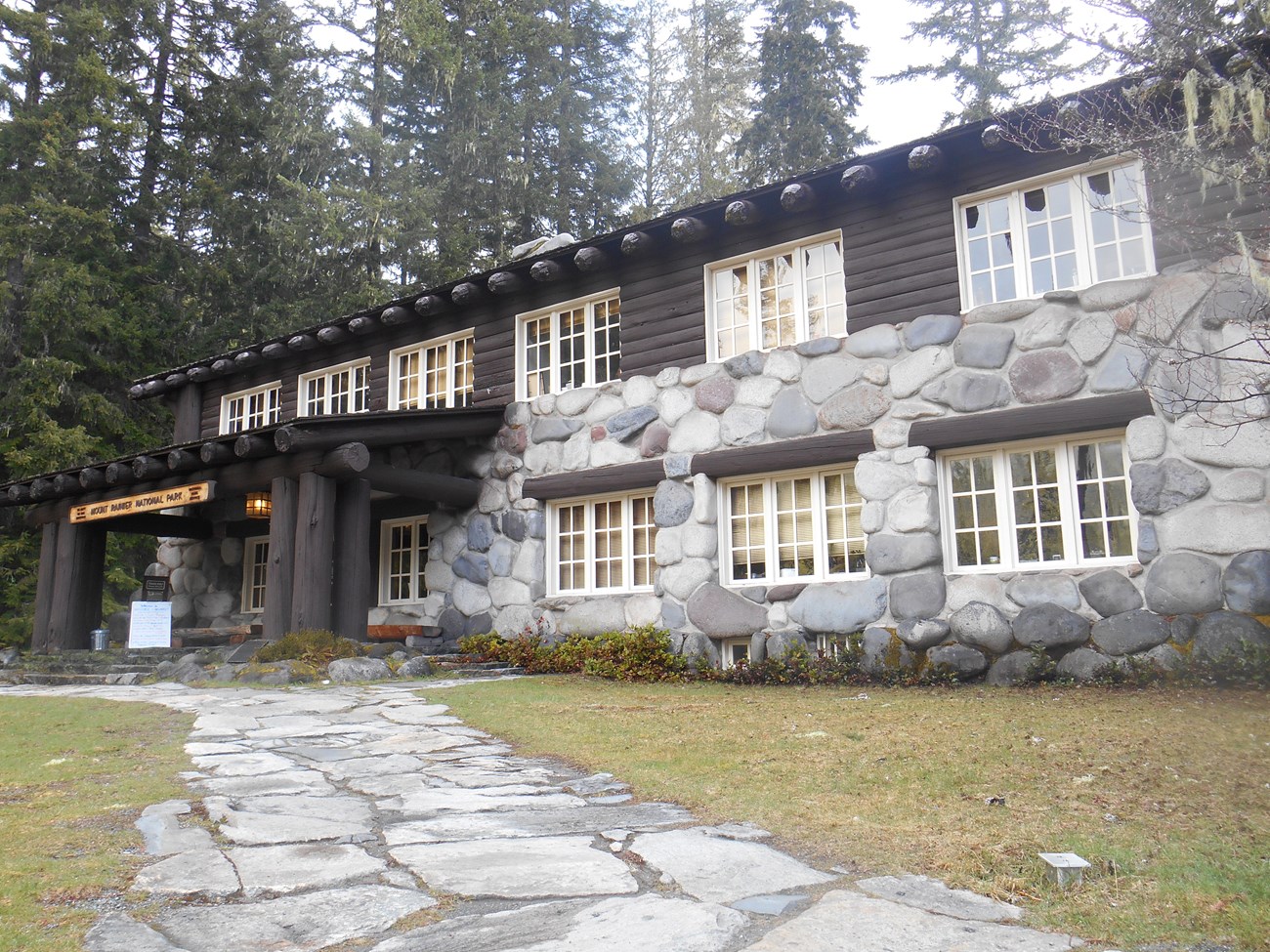Last updated: August 11, 2017
Article
Longmire: Designing a National Park Style

NPS/ A. Spillane
Longmire didn’t start out as part of a national park. James Longmire built the first buildings here on land he patented as a mining claim. He dreamed of building a health resort for vacationers to enjoy the mineral springs and serve as a base for exploring Mount Rainier. As James built a road, hotel, and other buildings and allowing greater access to the area, people began to see the potential in the beautiful slopes of Mount Rainier. They lobbied Congress for years to make it a national park and succeeded in 1899.

NPS Photo
Throughout the 1920s, the Longmire area continued to be developed, with renovation and construction projects. Through buyouts and a fire, what was a hotel annex became the National Park Inn. The gas station was redone to match the simple, rustic style of the Administration building. Meanwhile, the oldest building in Longmire, the general store (1906), would keep its appearance the same while changing its use. Over the decades, it has been a clubhouse, a hiker and skier information center, and a store. Warehouses and residences for rangers were also added to the landscape. As time went on, some structures went away like the many rental tents, the tennis court, horse livery barn, auto barns and hydroelectric plant. Some buildings moved in the 1970s and 80s, as the museum moved across the street and parking was rearranged to make Longmire more pedestrian friendly.

NPS Photo
Despite the threat from flooding, park rangers work constantly to preserve the history of Longmire, preserving these simple, rustic buildings that echo the beauty of the great mountain that they stand on. The Administration building, community building and gas station were nominated to the national historic register of historic places in 1986. Many of the other historic buildings were added to the historic register as part of a district in 1991. Maintaining the historical integrity of Longmire’s buildings is not only important to the park service, its important to our nation’s history and to park visitors everyday.
Learn more about visiting the Longmire area within the park.
Resources:
National Historic Register Nominations for National Park Inn, Administration Building, Community Building, and Gas Station
Wonderland: An Administrative History of Mount Rainier National Park
100 Years at Longmire Village by Sarah Allaback (Author), Victoria Jacobson (Author), Ronald Warfield (Photographer) Northwest Interpretive Associates, 2000.
Archaeology and History In the Nisqually River Corridor by: Greg C. Burtchard Jacqueline Y. Cheung Eric B. Gleason July, 2006.
National Historic Register Nominations for National Park Inn, Administration Building, Community Building, and Gas Station
Wonderland: An Administrative History of Mount Rainier National Park
100 Years at Longmire Village by Sarah Allaback (Author), Victoria Jacobson (Author), Ronald Warfield (Photographer) Northwest Interpretive Associates, 2000.
Archaeology and History In the Nisqually River Corridor by: Greg C. Burtchard Jacqueline Y. Cheung Eric B. Gleason July, 2006.
